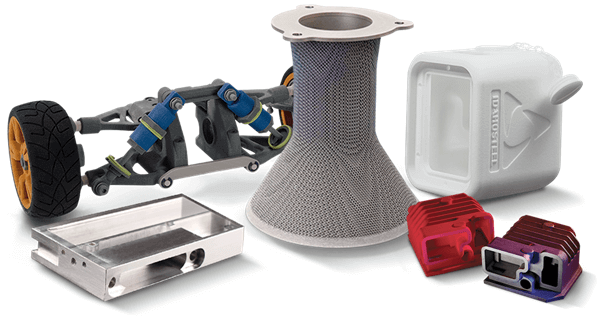As cliché as it sounds, time is money in the industrial and business world. The manufacturing process can be significantly accelerated using software automation and associated manufacturing equipment. Rapid manufacturing involves the creation of low-volume injection-molded plastics on-demand. Rapid manufacturing extends far beyond just the basics of molding, and it is also integrated into 3D printing and CNC machining.
This technology removes the need to expend high amounts of capital while waiting for weeks on end for a custom component. Rapid manufacturing can be used to craft a unique aluminum tool (for a few thousand dollars) that can itself be used to produce tens of thousands of custom parts. This can generate many short-run parts within a few days, made out of either plastic or metal. At its core, rapid manufacturing entails building components out of metal or plastic by layering them one at a time through additive fabrication. 3D printing is an excellent example of the use of rapid manufacturing technology.
Low Volume Manufacturing
As good as prototyping and mass production can prove to be business goals, sometimes it is more optimal to build a smaller number of finished parts, which may be a couple of hundred or even hundreds of thousands of parts. In this instance, the services of a professional prototyping company are engaged to produce the optimal number of required components to meet immediate demand. The company can handle initial product design and reviews, quotations, quality inspections, etc. Low volume manufacturing as an aspect of rapid manufacturing comes with many advantages. These include:

- Fast turn-around that incorporates faster design changes, reduced overall costs, and minimal production time.
- Distinct shortening of production lead times which translates to energy and time savings
- The production of a small initial run of parts or components means you can gain immediate access to the market faster than your competitors. Emerging markets can then be effectively harnessed.
- Through the use of low volume manufacturing, you can minimize the cost of tooling without needing a minimum number of orders, as opposed to full-scale production.
- Rapid manufacturing through low volume decreases the exposure to unnecessary financial expenses.
- Low volume production helps the business handle products with short product life cycles by enabling the company to produce required parts as per market demands quickly.
How rapid manufacturing can help mold makers
A customer of rapid manufacturing can implement DFM (Design for Manufacturability) in which a CAD model is uploaded online. The rapid manufacturing company provides feedback within a 24-hour period, which explains how the design can be enhanced to improve its manufacturability. In the long run, this minimizes production issues and saves highly valuable capital bases. When used well, rapid manufacturing can drastically reduce product design, development, and creation cycles. Rapid manufacturing readily embraces the principles of rapid prototyping and rapid tooling to get any job done, fast.

Selecting the right material for Rapid Manufacturing and Rapid Prototyping
There are different materials to choose from when selecting a metal alloy for CNC turning and milling. The factors to consider when picking a material for rapid manufacturing and prototyping depends on such factors as price, ability to resist corrosion, weight, cosmetic appearance, and workability.
Conclusion
Rapid manufacturing can significantly enhance the speed of delivery of prototype or finished parts and components for any company, great or small. It encompasses aspects of rapid prototyping and rapid tooling to get the concept from the design stage to the production stage very fast.











